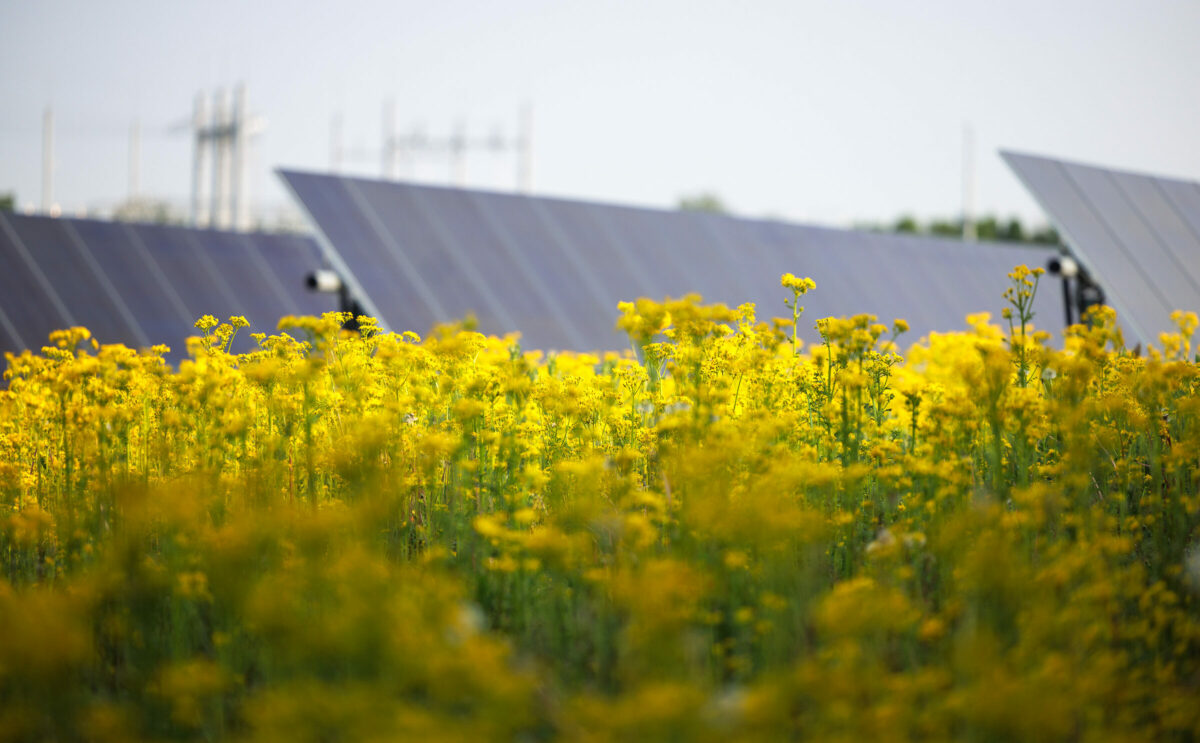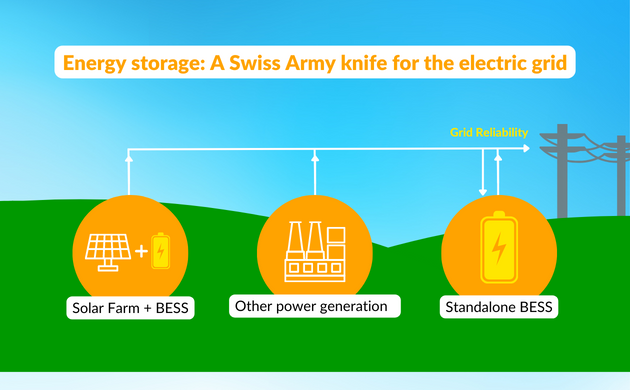Exploring energy storage part 3

How can storage help modernize the grid?
One of the hottest topics at the recent conferences I’ve attended is how we incorporate energy storage – either the 2–4 hour types of storage or longer duration – into the much-needed modernization plan for our electrical grid.
The U.S. grid is a network of more than 600,000 miles of transmission lines, power stations and switches that move electricity from one part of the country to another. However, as we deal with growing demand for electricity, re-occurring extreme weather events, cybersecurity, and the integration of more renewable energy, the flaws in our outdated grid have been exposed, as it’s also being pushed to do more than it was originally designed to handle. Our grid must be flexible and smarter as our energy mix continues to evolve for a more sustainable and secure future, with a focus on shifting toward sustainable renewable energy sources.
Currently, because of this, we have a backlog of renewable energy projects that are fully developed but can’t connect to the grid, because of a lack of grid capacity.
We can’t modernize the grid without storage.
Grid modernization means optimizing power delivery and enhancing resilience, by implementing new interactive capabilities to allow the system to respond to change more easily. This can be achieved by building more transmission lines and smarter infrastructure to deliver electricity from where it’s produced to where it’s needed most.
As the Los Angeles Times reported, “for [renewable energy sources] to supply ever-larger amounts of electricity — and replace the coal, oil and natural gas cooking the planet — the United States will need a lot more transmission lines, to carry renewable electricity from the nation’s sunniest, windiest places to the big cities that suck up huge amounts of power.”
The U.S. Department of Energy “Pathways to Commercial Liftoff” report on Long Duration Energy Storage (LDES) determined the U.S. grid may need 225-460 GW (ranging from 12-150 hours of duration) of LDES capacity for a net zero economy by 2050, representing $330B in cumulative capital. This can include a mix of short duration storage to support shorter term grid requirements.
According to Navigant Research, a total of 35.5 GW of new energy storage (with varying duration) will be built by the end of 2027. They estimate that 25 percent of that storage capacity will focus specifically on grid modernization.
To achieve the 2050 goal means that the sprint is on now, and we are seeing examples of progress from the solar industry and state and federal governments. For example:
- The federal Department of Energy has a grid modernization program that is investing at least $5 billion in research for storage and other grid modernization.
- A report from North Carolina State University showed that 48 states were engaged in grid modernization projects in the third quarter of 2022. Most of those projects involved developing storage.
- In Washington state, a new storage system is under development to modernize the state’s grid.
The Federal Energy Regulatory Commission (FERC) has stepped in, too, approving interconnection reform in many of the nation’s electrical grids.
Federal officials are working with the renewable energy industry, led by the trade associations Solar Energy Industries Association and American Clean Power, to develop clearer modernization plans.
Lightsource bp is also adding storage to our operational solar plants and to new solar plus storage plants. That’s to ensure our operations’ reliability and to support the grid.
As we approach the warmer months of the summer, that’s particularly important. There are already projections that we will face blackouts around the country if the weather gets too hot.
During last September’s California heat wave, storage helped provide electricity at key moments and helped the state avoid blackouts.
As researcher Mike Ferry wrote in the Los Angeles Times: The new storage facilities “play the role of major power plants. In fact, some of the biggest batteries literally occupy the real estate and buildings that once housed fossil-fueled generators.”
We see signs of this every day. That’s why Lightsource bp is committed to working with our industry partners to develop storage that can fit directly into grid modernization plans around the country.
Energy Solutions: Adding Storage
At Lightsource bp, our flexible, intelligent utility scale battery storage solutions enable us to further our mission to deliver affordable, sustainable solar power to businesses and communities around the world.
More from exploring energy storage
03 Jan, 2023
Exploring energy storage part 1: The rapidly changing world of renewable energy storage
First installment in our new series
07 Mar, 2023
Exploring energy storage part 2: Should storage be counted as renewable energy?
Storage is good for our energy grid


